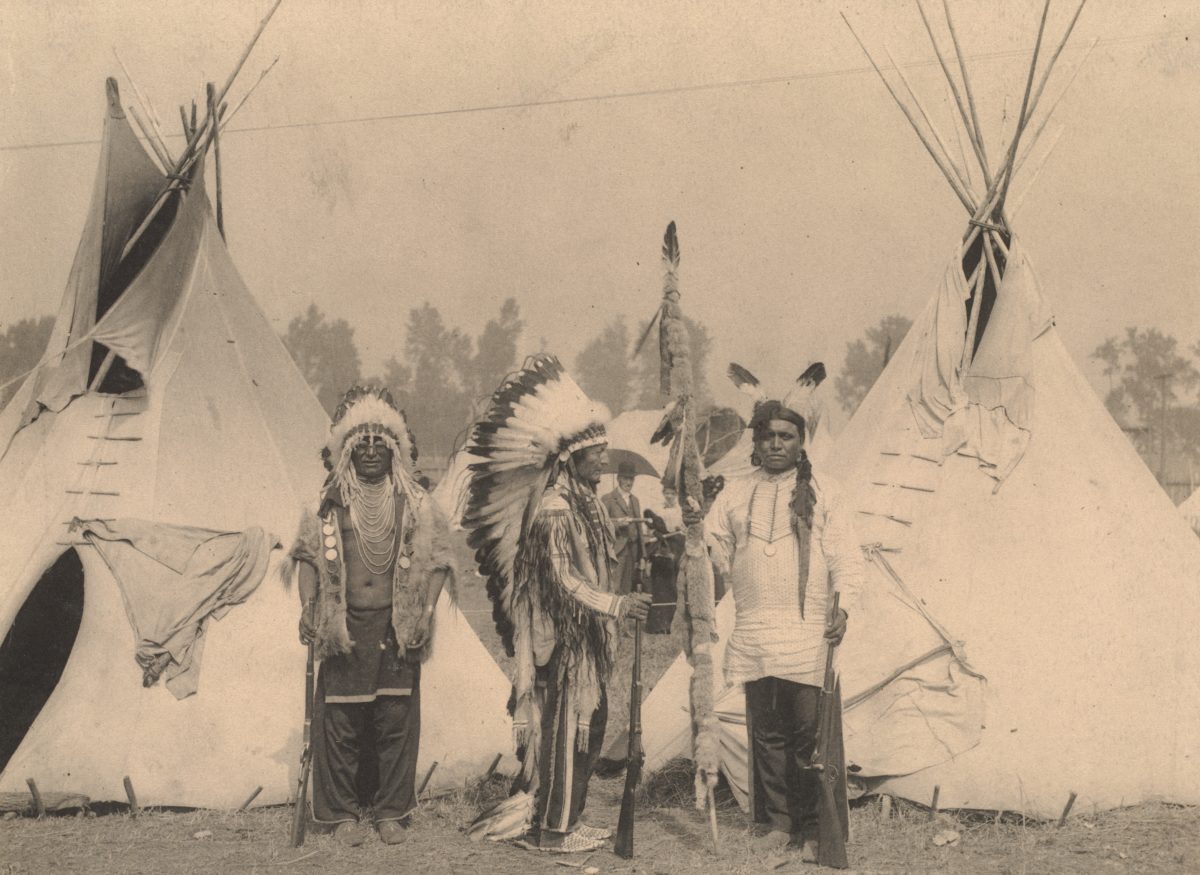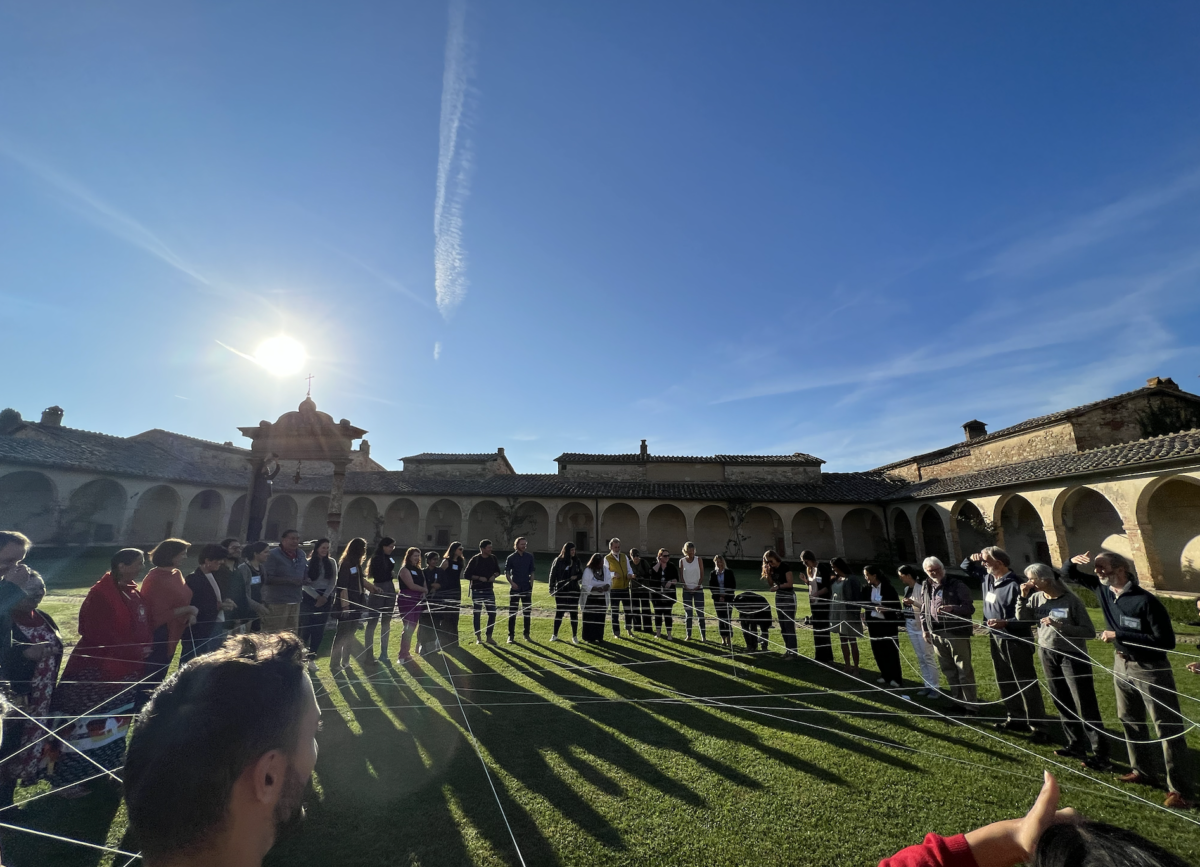Feature image by Katie Surma
Reservations about the Notion of Community
Lakota advocate and water protector Debra White Plume (Wioweya Najin Wina), upon being introduced to the history of municipal subjugation in the United States during a Democracy School hosted by residents of the Pine Ridge Reservation in South Dakota, remarked that “municipalities are the white man’s reservations. The only difference is, we know we’re on reservations.”
What do we mean by “community” when we say community rights? Native Americans like Wioweya Najin Wina have had their communities decimated by genocide, appropriation of their land, and forced relocation, but many retain their culture, their communities and traditions despite that history.
Non-native Americans of every ethnicity reside in communities established by law rather than by custom, and so when we advocate for the rights of those communities, we are often talking about communities defined by the political boundaries of municipalities and counties. It is, admittedly, arbitrary and a concession to coercive historic realities. But central to the idea of “Community Rights” is the notion of community as being a local society connected to the place on Earth that the people occupy and where they do their living and dying.

When we talk about the rights of communities, we generally talk in terms of communities that are place-based, with legitimate authority to exercise self-determination rooted in community traditions and cultures, always tempered by the obligation of each community to respect, protect, and enhance the equal rights of every member of the community.
For Native People, that community includes Nature and all the various species as members of the community, with full liberty to carry out their traditions and make choices for their communities based on their cultural norms.
For non-native people, the Community Rights approach has been to help communities exercise democratic rule-making to protect the health and safety of their human population and their local natural environment, and to recognize them as interdependent members of the same community, with the people empowered to represent the ecosystem in which they partake in all administrative and legal matters.
In simplest terms, our mantra at CELDF has been that community self-determination and Community Rights are best achieved when those who are affected directly by governing decisions are the ones who make them. Sounds reasonable, wouldn’t you say?
Broken Promises: Declarations and Treaties
In the late eighteenth century, commoners in the British colonies of North America were persuaded to join a rebellion against the Empire with promises of liberty from central government control. Most descendants of these colonists and immigrants that came after them don’t make the connection that their ancestors desired the same independence from coercive domination that Native Americans desire from domination by their occupiers. Also not gleaned from popular history is the fact that American revolutionaries waged a war of secession from the British Empire specifically and primarily to secure the right of local community self-government.
As mentioned in a previous column, the very first grievance colonists brought against the empire in the Declaration of Independence was denial of community self-governing rights. The complaint that’s mentioned first said of the king: “He has refused his Assent to Laws, the most wholesome and necessary for the public good.” It is abundantly clear that neither the revolutionaries nor their descendants have seen the rights to which they aspired come to fruition. That denial of the right of community self-determination, of course, goes doubly for Native Americans.

Almost since its inception, CELDF has challenged the institutionalization of Dillon’s Rule, the predominant legal theory thwarting realization of the right of local self-governance for colonizer communities. Dillon’s Rule makes political communities in the U.S. into state property, and gives each state total authority over them, including the power to override any local law, even if it would protect the community from harm, along with the power to overturn local elections, annex the municipality, or dissolve it completely. Under Dillon’s Rule, residents in a municipal jurisdiction are considered “mere tenants of the municipality,” with no right to local self-government.
Liberating every non-Native American from the straight-jacket of Dillon’s Rule is a project akin to compelling the U.S. government to honor its treaty commitments to the first Americans. Dillon’s Rule is the monolithic legal obstruction to one of the key components of the project at the heart of our organizational mission. When people complain that it’s not fair for state and federal laws to deprive communities of democratic processes that would allow them to prohibit corporations from harming people and the local environment, the answer they so often get to their complaints is that familiar mantra: “but it’s the law.” We understand that.
It’s the law that says NO to people governing their own communities. It’s the law that makes it legal for the federal system of government to refuse non-Native Americans the same rights refused to Native Americans, and that were refused revolutionaries by the British Empire prior to 1776.

Perhaps the most prominent feature distinguishing Community Rights within the federal system, for all those living under it, is its utter absence. Wouldn’t you say?
The Common Denominator in Empire’s Assault on Community: Law
Legal rights would be unnecessary were the current civilization not antagonistic toward human communities and antithetical to people living in community with the natural world. We would not need to demand civil rights for descendants of emancipated slaves if the U.S. empire permitted them justice. We would not be advocating for the Rights of Nature if the global empire of capital were not engaged in unrelenting assaults against the natural world. And we would not be struggling to establish and institutionalize Community Rights if the dissolution of communities did not serve the agenda of empire.
All empires of the past have left their structures behind for us to speculate about, their artifacts abandoned like dead coral reefs, leaving behind people to reclaim or reconstitute human culture closer to Nature. We have the evidence that the current global empire is unlikely to be the first to survive indefinitely.

The organic human relationship to Nature, currently denied reality by the unrelenting drive for material gain, is what requires preservation, because it defines humanity’s authentic place in the world. We call that authentic relationship Community Rights, by which we mean that every community of people, both Indigenous and settler, and including the natural ecosystems of which they are a part, have the right to defend and enforce the collective rights of the community and the rights of its individual members and natural environment.
The necessary alternative to the foolhardiness of open-ended product extraction and consumption is people living in community with Nature, if humanity itself is not to expire. That makes Indigenous Rights and Community Rights among the most important causes we can undertake. Wouldn’t you say?

